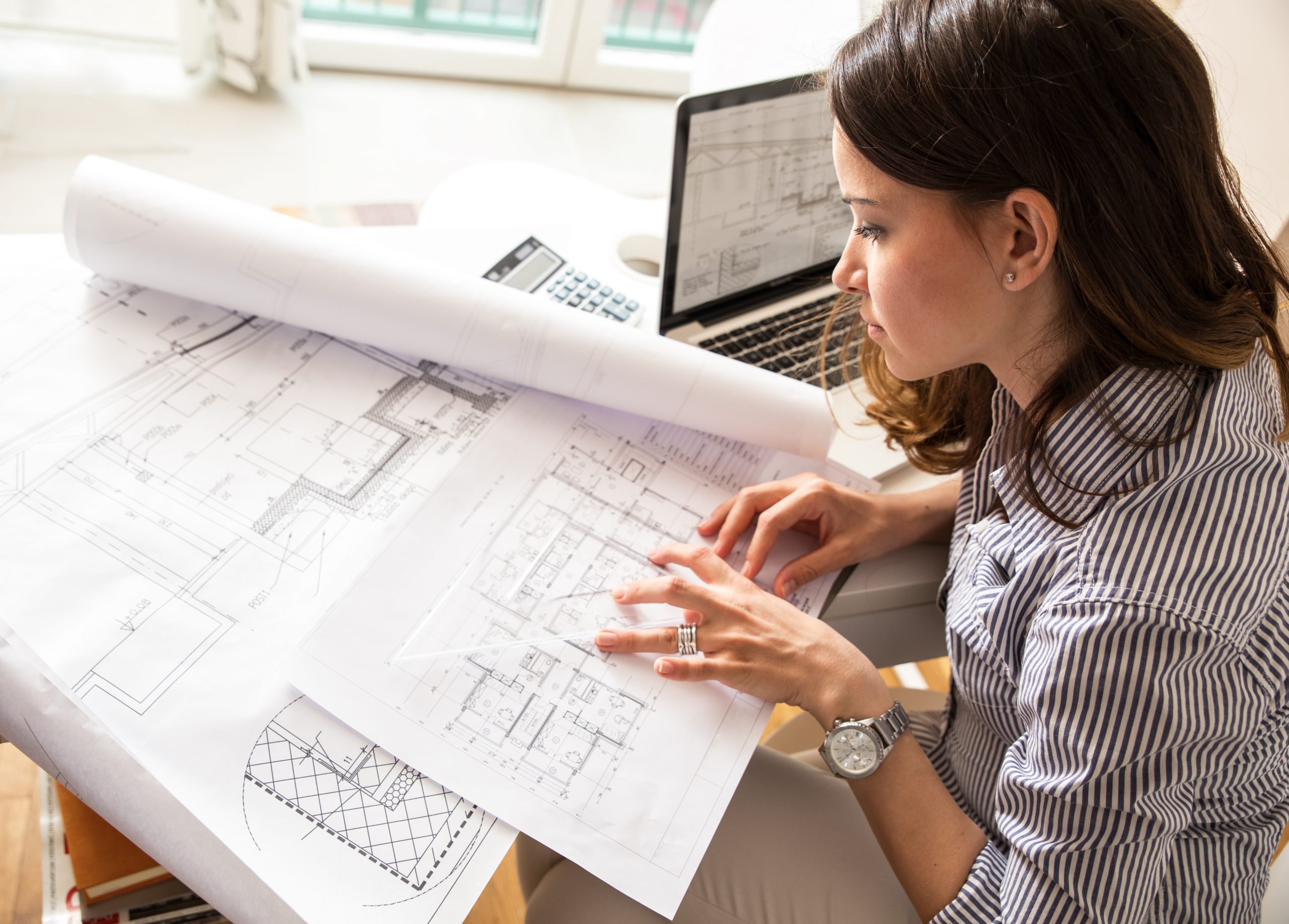Understanding the Diverse Job Paths Available for Aspiring Architect
As a hopeful Architect, you have a globe of career paths waiting for you. Whether you're attracted to standard architecture or the nuances of sustainable style, there's a particular niche that aligns with your rate of interests.
Typical Architecture: Designing Buildings and Structures
Typical architecture focuses on developing buildings and structures that mix performance with aesthetic charm. Your styles can mirror cultural heritage, showcasing local traditions while fulfilling modern-day requirements.
You'll establish skills in preparing, model-making, and website analysis, enabling you to picture and communicate your ideas efficiently. Involving with customers, you'll need to understand their vision and translate it right into possible styles.
Furthermore, constructing codes and sustainability techniques are essential in your job, guaranteeing your structures are risk-free and eco-friendly. As you grow in your profession, you'll discover opportunities in residential, commercial, or perhaps restoration projects, each offering special obstacles. Embracing standard design paves the way for a meeting career that pays homage to the past while forming the future.
Urban Planning: Forming Communities and Public Spaces
As an aspiring Architect, you can play a vital duty as a city organizer, changing just how areas work and communicate. By employing neighborhood engagement approaches, you'll ensure that residents have a voice fit their atmosphere. And also, incorporating lasting design principles will aid develop spaces that not only satisfy today's requirements yet also secure the future.
Role of Urban Planners
While lots of may believe of designers as the sole visionaries behind buildings, urban planners play an important role in forming the more comprehensive landscape of communities and public spaces. By teaming up with different stakeholders, you'll aid make parks, transport systems, and property areas that promote social communication and access. Your knowledge in spatial design and area characteristics enables you to envision future development while protecting social heritage.
Area Interaction Strategies
Effective area engagement strategies are essential for metropolitan planners to assure that the voices of residents are heard and valued in the preparation process. To cultivate significant discussion, you must prioritize open discussion forums and workshops where neighborhood participants can express their concepts and issues. Usage surveys and social media to reach a broader target market, ensuring varied perspectives are included. Teaming up with regional companies can enhance trust fund and help with much deeper connections. It is essential to offer clear details about suggested projects and decision-making processes, permitting locals to really feel informed and equipped. By proactively listening and integrating comments, you'll produce rooms that reflect the neighborhood's demands, ultimately causing more lasting and successful urban settings. Embrace transparency and constant dialogue for long lasting influence.
Lasting Style Concepts
When making city areas, integrating sustainable design principles is important for producing settings that prosper both environmentally and socially. You ought to start by focusing on energy efficiency, making use of products that decrease waste and promote recycling. Think about integrating green rooms, like gardens and parks, to improve biodiversity and enhance air quality. Advertising walkability and public transport can minimize reliance on vehicles, cultivating a much healthier community.
Creating with water conservation in mind is also vital-- consider rainfall gardens and absorptive surfaces to handle stormwater. Including area participants during the planning process guarantees that the rooms you create satisfy their needs and urge social communication. By welcoming these principles, you'll add to vibrant, lasting urban landscapes that profit everyone.

Landscape Architecture: Creating Lasting Outdoor Settings
As you check out landscape architecture, you'll discover crucial style principles that produce useful and lovely outdoor rooms. Sustainable techniques play a vital function in ensuring these atmospheres thrive while lessening environmental influence. Plus, you'll discover a variety of occupation opportunities that permit you to make a genuine distinction in how people connect with nature.
Style Concepts in Landscape
Comprehending layout principles in landscape design is necessary for developing sustainable outside settings that harmonize with nature. You'll need to ponder aspects like percentage, equilibrium, and range to ensure your layouts feel cohesive and inviting. Incorporating indigenous plants not only enhances biodiversity but likewise lowers water usage, making your landscape durable. Believe concerning the circulation of space and exactly how individuals connect with it; paths and seating locations should welcome exploration and relaxation. Additionally, take note of seasonal modifications, creating with products that enhance the surroundings year-round (Architect). By focusing on sustainability and appearances, you can create exterior spaces that enrich the community and promote well-being. Welcoming these principles will certainly establish a solid structure for your occupation in landscape architecture.
Sustainable Practices Summary
Sustainable practices in landscape architecture not just concentrate on looks however additionally focus on ecological health and wellness and source preservation. You can make spaces that advertise dirt health and wellness, such as exercising and making use of natural materials permaculture concepts. Eventually, these techniques guarantee your designs benefit both people and the atmosphere for years to come.
Occupation Opportunities Expedition
With a strong foundation in sustainable practices, landscape design uses a selection of job courses that permit you to make a meaningful effect on the setting. You can function as a landscape developer, developing cosmetically pleasing and practical exterior rooms, or concentrate on eco-friendly reconstruction, aiding to restore broken ecological communities. Urban organizers usually team check my site up with landscape engineers to produce eco-friendly spaces in urban setups, boosting city livability. If you're passionate about education, take into consideration coming to be a landscape design educator, motivating future generations. In addition, you may collaborate with nonprofits concentrated on ecological sustainability or participate in study to innovate brand-new practices. Each path not just shapes beautiful settings yet also fosters a much healthier world for future generations.
Lasting Style: Concentrating On Eco-Friendly Practices
As you explore your job in architecture, embracing environment-friendly practices can set you apart in a competitive area. Sustainable layout concentrates on developing buildings that lessen ecological impact while boosting occupant wellness. By including renewable materials, energy-efficient systems, and sustainable structure techniques, you'll contribute to a greener future.
Begin by obtaining knowledge of green accreditations like LEED or BREEAM, which can strengthen your qualifications. Take into consideration just how all-natural light, air flow, and thermal efficiency can optimize layout. Work together with engineers and environmental consultants to introduce solutions that decrease waste and save resources.
Do not neglect the importance of community involvement-- interesting neighborhood stakeholders can motivate layouts that balance with the environment. As customers significantly prioritize sustainability, your expertise in environment-friendly practices will certainly not just draw in jobs however likewise meet your enthusiasm for responsible architecture. Accept this vital element of the profession, and see your profession grow.
Historic Preservation: Securing and Recovering Social Heritage
While you begin on your building trip, consider the vital role of historical preservation in preserving our cultural heritage. This area concentrates on the security and reconstruction of considerable buildings, websites, and structures that inform the tales of our past. By engaging in historic preservation, you'll assist secure the building tradition that forms community identification.
As a historical conservation Architect, you'll evaluate historical significance and analyze the problem of structures. You'll work carefully with conservationists and chroniclers to ensure genuine repair techniques are used. This job path allows you to blend imagination with research, enabling you to design services that value original materials and craftsmanship.
Your job not just contributes to sustainability by recycling existing structures but also promotes a feeling of satisfaction within communities. Accepting this path will help you become a guardian of history, protecting the tales and aesthetic appeals that enhance our lives.
Inside Design: Enhancing Indoor Spaces
Historical conservation and indoor design both share a commitment to boosting the built environment, yet they focus on different elements. While historical preservation emphasizes maintaining a framework's historical and cultural worth, interior architecture nos in on special info maximizing interior areas for performance and looks.
As an ambitious Architect, you'll find that interior style enables you to mix creative thinking with technological abilities. You'll develop rooms that not just look good but also advertise convenience and efficiency. This field involves understanding how light, shade, and materials interact within a space, affecting mood and usability.
You'll work on different jobs, from domestic homes to industrial offices, guaranteeing that each environment fulfills the demands of its owners. By focusing on individual experience, you can transform interiors right into motivating and practical rooms, making a significant influence on just how people communicate with their surroundings. Welcome the possibility to improve interior settings and shape the way individuals live and function.
Industrial Layout: Combining Performance With Appearances
Commercial style plays a vital role in producing items that flawlessly blend visual appeals with functionality, making sure that what you use day-to-day is not just visually appealing but additionally sensible. As a hopeful Architect, you might involve yourself in this area, concentrating on developing everything from furnishings to consumer electronics. Your job involves recognizing user demands, materials, and producing processes, enabling you to create innovative services that boost everyday experiences.
In commercial design, you'll typically work together with marketing experts, suppliers, and engineers, guaranteeing that your designs are not just beautiful however likewise practical. This profession path supplies a vibrant environment where creative thinking fulfills functionality, making it a gratifying choice for engineers interested in forming the items of tomorrow.
Often Asked Questions
What Educational Qualifications Do I Required to End Up Being an Architect?
To come to be an architect, you'll require an expert degree in style, usually a Bachelor's or Master's. Additionally, you'll have to finish a teaching fellowship and pass the Architect Registration Exam to practice lawfully.
Are There Qualification Needs for Various Building Occupation Paths?
Yes, there're certification demands for different architectural paths. Architect. You'll require to pass tests, complete teaching fellowships, and in some cases go after specialized training, depending on your picked focus, like landscape design, city style, or historical conservation
What Software Program Abilities Are Crucial for Designers Today?

Exactly How Can I Gain Practical Experience While Studying Architecture?
You can gain practical experience by interning at architectural firms, taking part in style competitors, offering for area tasks, or collaborating with classmates on real-world assignments. These chances enhance your skills and construct beneficial connections in the sector.
What Task Opportunities Exist Outdoors Standard Design Firms?
You can discover various work Go Here chances outside typical style companies, like urban preparation, interior decoration, landscape design, construction administration, real estate advancement, and even functions in sustainability consulting. Each offers distinct challenges and incentives.
Whether you're drawn to traditional style or the nuances of sustainable style, there's a specific niche that straightens with your rate of interests.When making urban spaces, incorporating lasting design concepts is crucial for developing settings that grow both environmentally and socially.As you explore landscape style, you'll find crucial style principles that create useful and gorgeous outdoor rooms.Comprehending layout principles in landscape style is crucial for creating sustainable outdoor settings that balance with nature.In industrial layout, you'll usually team up with marketers, suppliers, and designers, making sure that your designs are not just attractive yet also feasible.